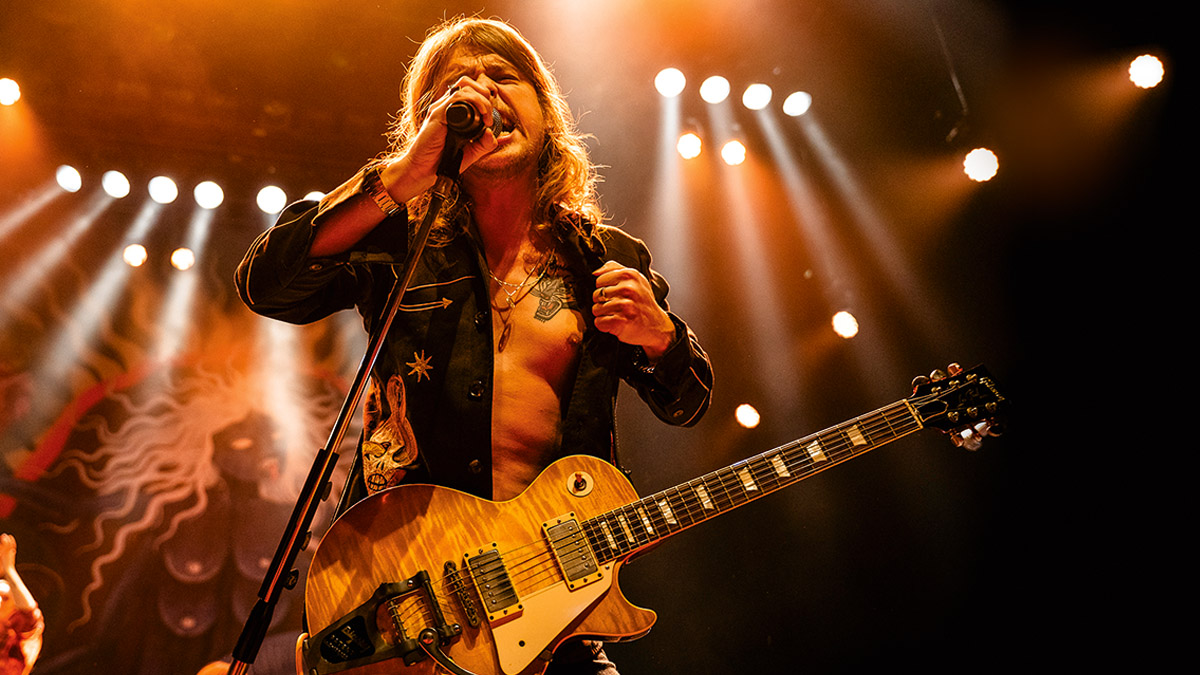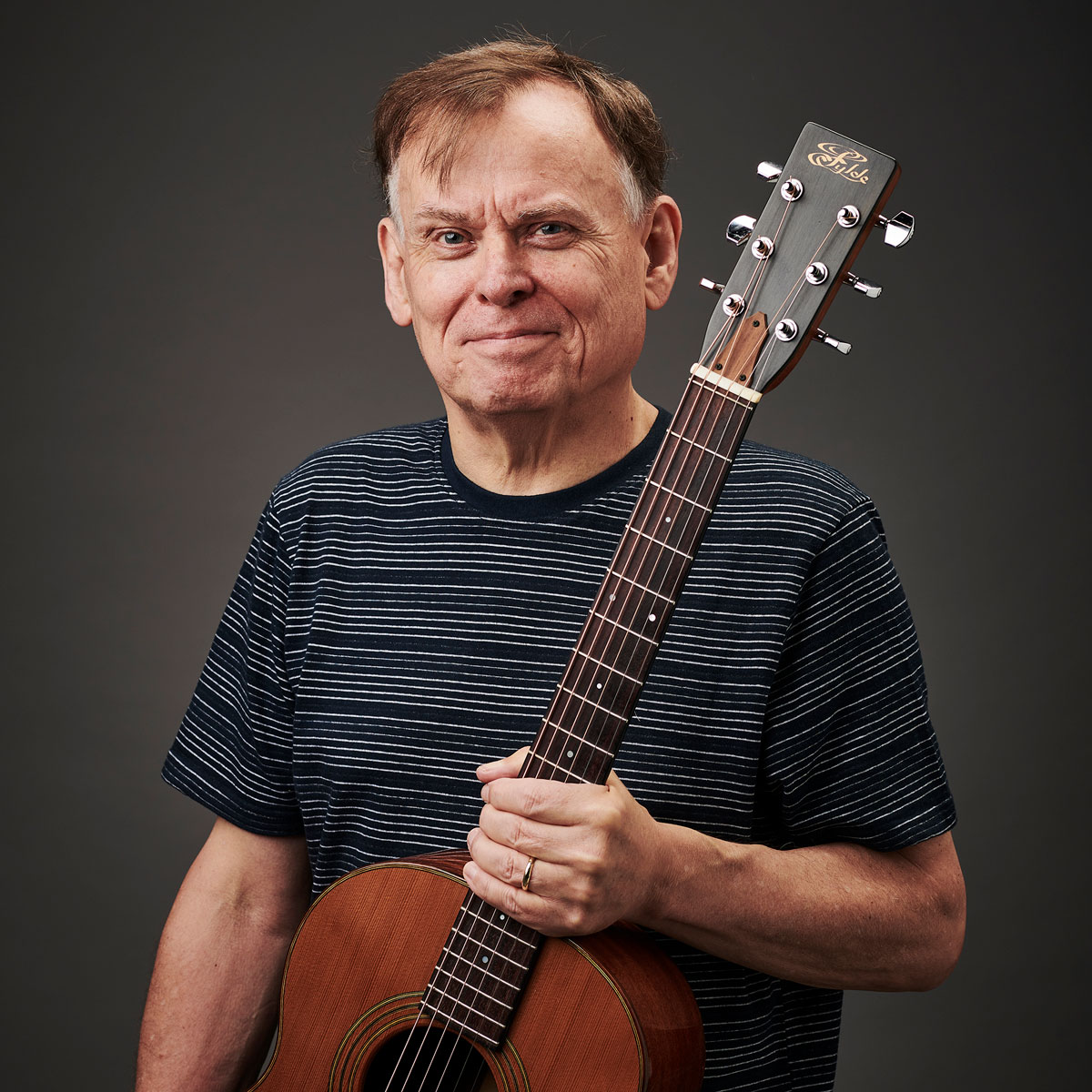“I have the heaviest boost pedal in existence – it’s a Marshall half-stack that I switch on when the sound needs to be bigger”: DeWolff’s Pablo Van De Poel on his life in gear – and a rig that is not to be trifled with
The DeWolff guitarist recalls a Les Paul that broke his heart and a spectacular deal on a vintage bass

This edition of Bought & Sold turns up the volume for Pablo Van De Poel, the Gibson Les Paul-toting guitarist for Dutch psych rockers DeWolff. You know the drill; we’re talking greatest gear hits, biggest misses, regrets and buying tips – and the answer to guitar’s biggest questions?
Cheap guitar and high-end guitar amp vs high-end electric guitar and cheap amp? Single coils vs humbuckers? Y'know, the big stuff. But we’ll also be discussing Van De Poel’s rig, and some of the gear you might be hearing on DeWolff’s new album, Love, Death & In Between – or in concert if you’re lucky enough to catch them on tour in the UK this March.
What was the first serious guitar that you bought with your own money?
“When I was eight years old, I started saving up for my first guitar, and then on my ninth birthday my grandma paid the extra 50 euros that I needed to buy a Squier Affinity Series Telecaster. I think it was, like, 400 euros. I was heavily into Metallica and that was the reason why I wanted to play guitar as a nine year old.
“I had my first guitar lessons and my guitar teacher put some sheet music in front of me and said, ‘Okay, this is the first song you're going to learn,’ and I was like, ‘This is not what I expected…’ I just wanted to play Metallica and shred! Then, when I was 13, I discovered Nirvana and then I got into Hendrix and that's when I got really serious about playing guitar.”
What was the last guitar you bought and why?
“I bought a 1956 Gibson ES-225 – single-cutaway, sunburst, two dog-ear P-90s – and it’s a great guitar. Nothing sounds like a full hollowbody, those are my favourite-sounding guitars, but they're just really hard to use live when you're using distortion. Gibson, here in the Netherlands, lent me a new 225 and I felt that it had a lot of potential because you have endless sustain if you're lucky and you’re in the right position.”
Get The Pick Newsletter
All the latest guitar news, interviews, lessons, reviews, deals and more, direct to your inbox!
“I figured, ‘Well, if I find a guitar like this one but old, with old wood and old pickups, I think that’s my ultimate guitar.’ Then I was in Paris when we were supporting The Black Crowes on tour and I walked past a guitar shop and it was in the window, but it was just far away enough that I couldn’t really tell if it was old or new.
I always follow my instincts. Basically, I find that if I buy something that later I’m not sure I should have bought, I can always sell it and buy something else because secondhand guitars hold their value most of the time
“I had to wait until past lunchtime because all the shops were closed. Then I came back and walked into the shop and it turned out to be an almost 70-year-old instrument. One pickup was broken, but it was a good price so I bought it there and then.”
What’s the most incredible find or bargain you’ve had when buying gear?
“I was at a vintage guitar show and at the end of the day there were a couple of stands selling cheap stuff. They were just basically giving stuff away and so I bought three basses for 200 euros. That’s 66 euros each!
“One of them has been on a lot of the DeWolff records. It’s a 60s Fasan; it’s a German make and it’s very comfortable. I put flat-wound strings on it, it’s very resonant and it has all these crazy electronics. I'm still not sure what they do, but it’s a great-sounding bass.”
What’s the strongest case of buyer’s remorse you’ve experienced?
“Well, the same guitar that I had buyer’s remorse with, I also have seller’s remorse with. I didn’t have the money to buy [this guitar], but I knew the seller and he was like, ‘Well, you can pay 1,000 euros now and then pay 500 every month after that.’ This was years ago and 1,000 euros was all the money I had and I wanted to buy this Waddy Wachtel Les Paul, which, if you look it up now, it’s like eight or nine grand. Back then I could buy it for four.
“So I closed the deal with this guy and I paid 500 euros month after month. I was still a student so I was living off water and dry bread to pay off this guitar. Every show I was assessing it again and again, like, ‘Is this guitar worth the money?’ Some shows I was like, ‘Yeah, it’s great.’ Some shows I was like, ‘Nah, not really.’ Then I got sick and tired of it and I just sold it for the same price I got it for. Later, when I did have the money, I was like, ‘Oh, man…’ So that's buyer’s and seller’s remorse in one, right?”
What’s your best guitar-buying tip?
“I always follow my instincts. Basically, I find that if I buy something that later I’m not sure I should have bought, I can always sell it and buy something else because secondhand guitars hold their value most of the time. Go with the gut instinct.”
When was the last time you stopped and looked in a guitar shop window (or browsed online) and what were you looking at?
“Well, the area where I live now doesn’t have any guitar shops, but I do spend a lot of time looking at guitars online. Recently, I was looking at a vintage Firebird and I got this guy’s number who was selling it – it was a ’63.
“We were on tour and so I actually had to meet with him in the parking lot of a McDonald’s. We were there with our touring van and it had a power outlet inside, so I plugged my amp in the van and opened the doors and just played the Firebird there in the parking lot.”
If forced to make a choice, would you rather buy a really good guitar and a cheap amp, or a cheap guitar and a top-notch amp?
“A cheap guitar and a top-notch amp. Because the amp is the last thing in the chain and, in a way, it does most of the work. I know a lot of players that play really cheap guitars, but they're like old cheap guitars – vintage cheap guitars. If you hook them up to a good-sounding amp, it can make all the difference. Whereas if you play the most expensive Custom Shop Les Paul through a cheap amp it's gonna sound like shit.”
On my main guitar, the Les Paul, I use ThroBak PAF-style pickups, wound on the original machine that Gibson used to have in Kalamazoo in the 50s. So it’s very close to an original PAF
If you could only use humbuckers or single coil pickups for the rest of your career, which would it be and why?
“I am a big fan of humbuckers that don’t sound like humbuckers – very low output humbuckers. So I’m gonna go with humbuckers. On my main guitar, the Les Paul, I use ThroBak PAF-style pickups, wound on the original machine that Gibson used to have in Kalamazoo in the 50s. So it’s very close to an original PAF.
“Another guitar had two broken pickups and I had them rewound by a friend of mine. I told him I wanted the lowest output humbuckers you can get away with. So he wound them so they read like 6k or 7k, which is almost like a single coil. But they’re great; they sound very clear and open and I love that.”
Pablo's go-to rig
“The guitar is either a Firebird or a Les Paul. And then I have two Isle Of Tone fuzzes: one of them is more like a heavy overdrive and the other one is really like a fuzz. They’re both germanium [transistor] based and I have either one of those on all the time. I have an A/B switch that either runs through to overdrive or fuzz, and I do all of my cleaning up with the volume on my guitar. So I’m constantly switching and dialling the pots.
“Then there’s a bunch of pedals that I sometimes use. I have the Carl Martin HeadRoom spring reverb – that’s also always on – and then I run that into my Fulltone Tube Tape Echo, which has a tube preamp onboard that is also always on. Then I run that into an 18-watt [Marshall] Bluesbreaker amp and a 90s JTM45 combo.
“I also have the heaviest boost pedal in existence: it’s a Marshall half-stack that I switch on and off when the sound needs to be bigger for solos or extra heavy parts – or sometimes very quiet parts because I feel like if you’re playing quietly on a big-sounding rig, that sounds very dangerous!”
- Love, Death & In Between is out now on Mascot Records.
With over 30 years’ experience writing for guitar magazines, including at one time occupying the role of editor for Guitarist and Guitar Techniques, David is also the best-selling author of a number of guitar books for Sanctuary Publishing, Music Sales, Mel Bay and Hal Leonard. As a player he has performed with blues sax legend Dick Heckstall-Smith, played rock ’n’ roll in Marty Wilde’s band, duetted with Martin Taylor and taken part in charity gigs backing Gary Moore, Bernie Marsden and Robbie McIntosh, among others. An avid composer of acoustic guitar instrumentals, he has released two acclaimed albums, Nocturnal and Arboretum.
Ozzy Osbourne’s solo band has long been a proving ground for metal’s most outstanding players. From Randy Rhoads to Zakk Wylde, via Brad Gillis and Gus G, here are all the players – and nearly players – in the Osbourne saga
“I could be blazing on Instagram, and there'll still be comments like, ‘You'll never be Richie’”: The recent Bon Jovi documentary helped guitarist Phil X win over even more of the band's fans – but he still deals with some naysayers















